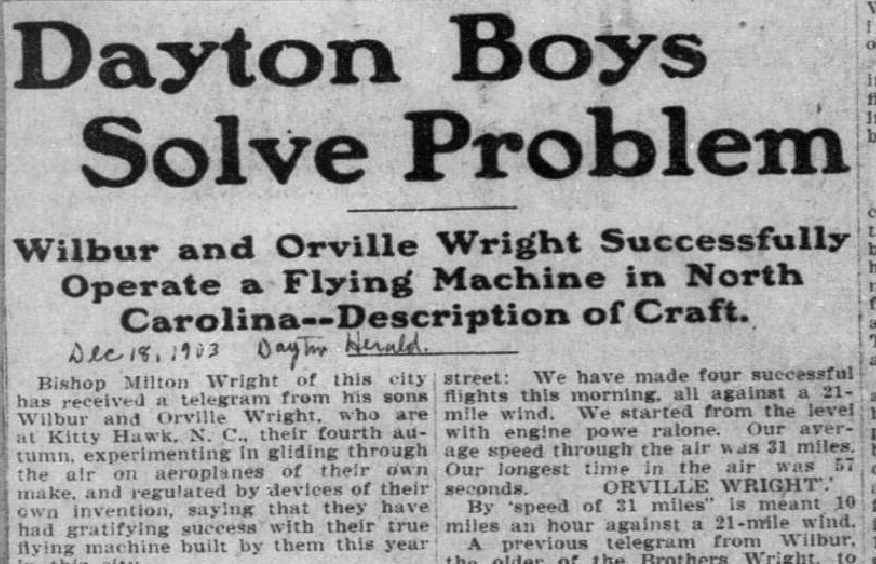Today in History: The Wright Brothers complete the first heavier-than-air machine-powered flight, 1903 (United States)
The Wright Flyer (sometimes called the Flyer 1 or the 1903 Flyer) was the first heavier-than-air, powered aircraft to fly successfully. On December 17th, 1903 at 10:35 AM, after years of experimentation, the aircraft flew at Kitty Hawk, North Carolina, ushering in the aviation age.
The Wright Flyer was in many ways a natural extension of the gliders that the Wright brothers had built and tested since 1900. However, to account for the extra weight that an engine and propellers would bring to the aircraft, they had to extend the wing area to more than 500 square feet. Extending the wing area of course meant adding even more weight, and by the time of its maiden flight, the Flyer’s empty weight reached 605 lbs.
As for the engine, the brothers reached out to many different automobile manufacturers in the hope of finding a lightweight gasoline-powered engine that could efficiently power the aircraft. Since nothing available suited their needs, the Wrights turned to their friend and coworker Charlie Taylor, who was able to build an engine from scratch.
Apparently the Smithsonian battled with Orville for years to claim the Wright Flyer (Willbur having died of typhoid fever), because the Smithsonian director had tried to invent his own flying machine which infringed on the Wrights' patents, so Orville sent the Flyer to London out of spite. https://www.libraries.wright.edu/special/wrightbrothers/flyer/history



Comments
Post a Comment